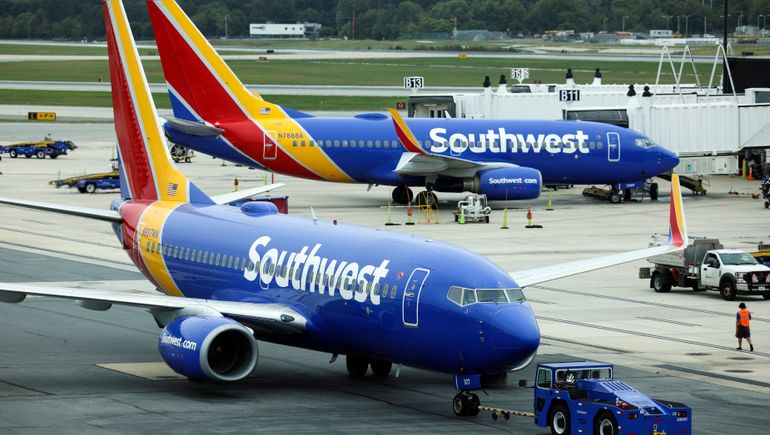|
Getting your Trinity Audio player ready...
|
Southwest Airlines CEO Bob Jordan pushed back against allegations that insufficient IT investment led to the carrier’s December meltdown, during a FY-2022 Q4 earnings call Thursday. “Based on what we know at this point, our processes and technology generally worked as designed,” Jordan said.
Jordan blamed the debacle — which stranded thousands of passengers and cost the carrier an estimated $800 million — on a perfect storm of bad weather, mass cancellations and a “historic level” of rerouting and rescheduling.
“It just overwhelmed the technology and the processes,” Jordan said.
The airline is committing $1.3 billion to IT maintenance and upgrades in 2023, up from the $1 billion previously pledged, and said it has already begun implementation.
“We’re in the process of swiftly updating and upgrading our crew recovery tools and system to solve the backlogged repair of crew member schedules, which was one of the key issues during the disruption,” Jordan said.
System failures were central to Southwest’s inability to recover from Winter Storm Elliott. Patches, upgrades and accelerated IT investment are key components of mitigation efforts underway.
“Our crew sharing software didn’t stop working during the disruptions, but a combination of our processes and the technology couldn’t keep up with the pace of cancellations at the height of the weather disruptions,” Andrew Watterson, chief operating officer at Southwest, said during Thursday’s call.
A cascading crisis ensued, according to Watterson, as the airline switched to manual rescheduling and was swamped by cancellation volume.
“The last domino to fall was when we could no longer use our automation for crew scheduling,” Watterson said.
Southwest uses an automation tool for reassignments and to call up reserves. The system was designed to manage upcoming assignments, not to look backward as it solves future problems.
“The disruption uncovered a functional gap in our technology,” Watterson said.
GE Digital and in-house IT teams will complete updates to that system, SkySolver, within weeks, according to Watterson.
Watterson waved aside concerns about the carrier’s point-to-point routing, which differs from the hub-and-spoke model favored by most other carriers, pointing to a technology tool called “the Baker” that provides solutions to manage irregular operations.
The Baker group project used dispatch superintendents and software developers to improve decisions around operational disruptions, according to a 2018 case study by Deloitte Insights. Analysts credited the solutions with helping to “boost on-time performance during extreme winter storms by more than 200%.”
In addition to repairing the automation tool, the carrier aims to introduce a new crew scheduling phone system, create a network disruption pod in its operations control center and improve integration of crew data into flight cancellation decisions during the first half of the year, Watterson said.
Additional near-term implementations include an early warning dashboard that signals if predefined operational thresholds are reached, and enhancements to electronic crew communication and scheduling capabilities, according to Jordan.
Southwest has established an operations review committee to recommend further improvement and retained management consultant firm Oliver Wyman to assist.
“We’re not prejudging all the extra spend would be IT,” Watterson said. “It could be the case that we need new or different deicing trucks or some other infrastructure at the airport.”



